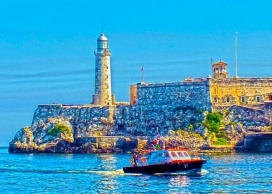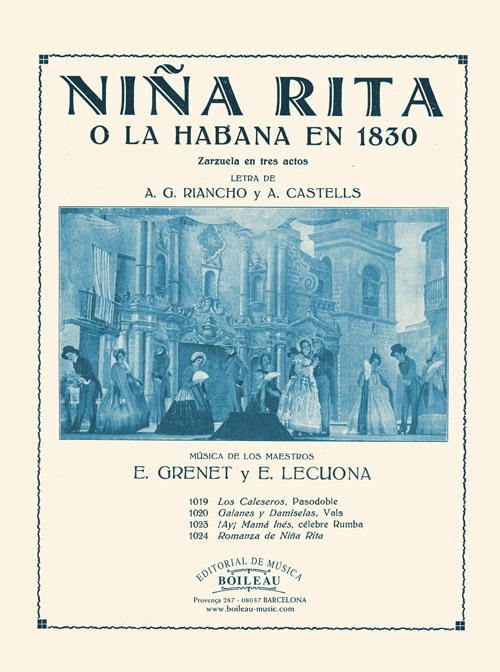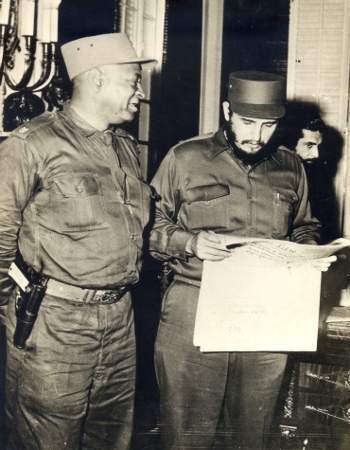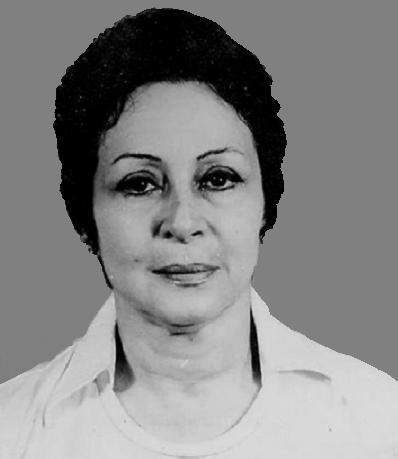
Havana ephemeris. September 29th.
1927. The teachers Ernesto Lecuona and Eliseo Grenet premiere the musical work named “Niña Rita o la Habana de 1830” at the Regina Theater in Havana.

With this event, a new season is held at the Teatro Regina and marks the theatrical debut of Rita Montaner, who then premiered the famous tango-congo “Ay madre Inés”.
Thus begins a brilliant artistic career, which takes Rita to the main stages of Cuba and the world and consecrates her as a genuine glory of Cuban art.
1857. Miguel Antonio Navarrete, owner of the San Antonio Abad paddock and co-heir of the Santa Ana ranch, both farms located to the southwest of the Calzada de Guanajay, requested the corresponding authorization from the Superior Civil Government to parcel out and distribute a part of those lands with a view to the creation of the town La Lisa.
This urbanization project was approved that same year by the competent authorities and since the “Santa Ana” ranch was owned by Brígida de Castro Palomino, who had already died years before without leaving a will, the lots that resulted from the division were distributed among the numerous heirs after a long legal process that lasted several years.
1872. The Spanish architect Calixto de Loira dies in Havana.

Based in Cuba, he designed and was in charge of the works of the Colón Cemetery in Havana. Construction begins with the Tobías Gallery, which is extensive and underground for a hundred meters, where 526 niches were located in its walls, each one 67 centimeters wide by 80 high and 2 meters deep, with semicircular finials.
The first to inaugurate the recently begun construction of the Tobías Gallery was the author of the Colón Cemetery project, the Galician architect Calixto Loira Cardoso. His body was placed in niche 263, the last on the north side, or the first by the east entrance, 13th Street, on the right.
His birth took place in Galicia on June 3, 1840.
1911. José María Pérez Capote is born in the area of San Antonio de los Baños, then province of Havana.

From the stage of his youth he began to interact with a large number of workers who had a notable influence on his political formation, which made him sensitize himself to all the popular causes of both workers and students. During the final years of the 1920s and the beginning of the following decade, he resolutely participated in the confrontation with the dictatorship of Gerardo Machado. He was in demonstrations and other actions.
In 1938 he led the foundation of the Federation of Workers of the province of Havana and later participated in the constitution of the Confederation of Workers of Cuba.
At present, Cuban workers in general, and in a very specific way those integrated into the National Transport Union, pay homage to him by having chosen his name as a symbol of that Cuban union organization.
He passed away in Havana on November 20, 1957.
1933. The boy, Francisco, Paquito, González, is assassinated in Havana, when the police repress a popular demonstration.

His heroic and dignified attitude was not the consequence of an accidental event, but of a position aware of the danger he was in and the willingness to face it and die if necessary in fulfillment of the sacred duty of a revolutionary: to fight to the last consequences against the capitalist regime. , against imperialism and for the establishment of a new and beautiful society like the one we enjoy today. There he met his death in front of the local Pioneer League that he loved so much, when he was barely 13 years old.
1954. Alberto Pedro Torriente is born in Havana.

In his work throughout his life he graduated from the National Theater School. He joined the casts of the Popular Art Theater and the Bertolt Brecht Political Theater, groups that premiered his initial dramatic creations. His works have been staged in different countries.
He served for many years as a professor of Universal Theater History at the School of Performing Arts of the Higher Institute of Art in Havana.
He taught courses and master classes in Dramaturgy at the Royal School of Dramatic Arts in Madrid, Spain, at the University of Toronto, Canada, at the Dramatic Society of Maracaibo, Venezuela, and at the First International Meeting of Playwrights in Rio de Janeiro. Brazil.
He passed away in Havana on June 5, 2005.
1963. Commander Ernesto Che Guevara summarizes the first international meeting of architecture students.

Che highlights the qualities of the Cuban people when summarizing in Havana the first International Meeting of Architecture Students.
He expresses: “This is a town where a few years ago the North American sailors relieved themselves at the head of our Apostle Martí, and today it is a town entirely upright against North American imperialism. An extraordinary phenomenon of total change in the consciousness of the masses has taken place in a few years of revolutionary work.”
1972. Pedro Sarría Tartabull dies in Havana.

A military man with a Cuban career, he entered the Army as a soldier in 1925 and gradually improved himself professionally, which allowed him to reach the rank of lieutenant. He commanded the patrol that, after the events of the attack on the Moncada barracks, took Fidel Castro and two other combatants prisoner. His civic and brave attitude prevented them from being assassinated and he transferred them to Santiago de Cuba. For this reason he was discharged from the Army. After the triumph of the Cuban Revolution, Fidel himself promoted him to captain.
His birth took place on January 1, 1900 on a farm located in the La Caridad sugar mill, near the city of Cienfuegos.
1998. Juana María Sainz Sahig dies in Havana.

Pianist, pedagogue, critic, music researcher and Doctor of Science.
She was known as Ñola Sahig. Her birth occurred on January 11, 1925 in Ciego de Ávila.
She made her first professional performance in 1947 at the Havana Chamber Music Society. She incorporated works from all eras and styles into her repertoire, highlighting contemporary Cuban music. To her career as a concert pianist she added her excellent work as an accompanying pianist.
She was characterized by her high interpretive level and great technical virtuosity.
Her birth took place in Ciego de Ávila on January 11, 1925.
2012. Liborio Noval dies in Havana.

He was a prestigious photographer who received the José Martí National Prize for Journalism. Closely linked to revolutionary graphics since the very triumph of the Revolution, he worked at the newspaper Revolución and later, for more than forty years at the newspaper Granma. He received numerous awards in Cuba and abroad for his work. His photos were published in national and international magazines, as well as in photo books.
After his retirement as a photojournalist he participated in group exhibitions and also presented personal exhibitions.
About his work as a photographer it has been affirmed that he proved to be a master of the lens, a hunter of the precise moment, a maker of good images.
His birth took place on January 29, 1934.